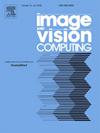FHLight:利用改进的损失函数估算室内场景光照度的新方法
IF 4.2
3区 计算机科学
Q2 COMPUTER SCIENCE, ARTIFICIAL INTELLIGENCE
引用次数: 0
摘要
在增强现实任务中,尤其是在室内场景中,实现虚拟物体与真实环境之间的光照一致性是一项严峻的挑战。目前,主流的方法有光照参数回归法和光照图生成法。在这两类方法中,能有效恢复室内场景中高频和低频光照信息的作品很少。在这项工作中,我们认为有效恢复低频光照信息是捕捉高频光照细节的基础。因此,我们提出了一种名为 FHLight 的新型光照估计方法。在技术上,我们使用低频光照回归网络(LFIRN)恢复的低频球谐波辐照度图(LFSHIM)作为先验信息,引导高频光照发生器(HFIG)恢复光照图。此外,我们还提出了一种改进的损失函数来优化网络训练程序,确保模型能够准确还原场景中的低频和高频光照信息。我们将 FHLight 与几种有竞争力的方法进行了比较,结果表明在 RMSE、si-RMSE 和角度误差等指标上都有显著改善。此外,视觉实验进一步证实,FHLight 能够生成具有真实频率的场景光照图,有效解决了虚拟物体与真实场景之间的光照一致性问题。代码可在 https://github.com/WA-tyro/FHLight.git 上获取。本文章由计算机程序翻译,如有差异,请以英文原文为准。
FHLight: A novel method of indoor scene illumination estimation using improved loss function
In augmented reality tasks, especially in indoor scenes, achieving illumination consistency between virtual objects and real environments is a critical challenge. Currently, mainstream methods are illumination parameters regression and illumination map generation. Among these two categories of methods, few works can effectively recover both high-frequency and low-frequency illumination information within indoor scenes. In this work, we argue that effective restoration of low-frequency illumination information forms the foundation for capturing high-frequency illumination details. In this way, we propose a novel illumination estimation method called FHLight. Technically, we use a low-frequency spherical harmonic irradiance map (LFSHIM) restored by the low-frequency illumination regression network (LFIRN) as prior information to guide the high-frequency illumination generator (HFIG) to restore the illumination map. Furthermore, we suggest an improved loss function to optimize the network training procedure, ensuring that the model accurately restores both low-frequency and high-frequency illumination information within the scene. We compare FHLight with several competitive methods, and the results demonstrate significant improvements in metrics such as RMSE, si-RMSE, and Angular error. In addition, visual experiments further confirm that FHLight is capable of generating scene illumination maps with genuine frequencies, effectively resolving the illumination consistency issue between virtual objects and real scenes. The code is available at https://github.com/WA-tyro/FHLight.git.
求助全文
通过发布文献求助,成功后即可免费获取论文全文。
去求助
来源期刊

Image and Vision Computing
工程技术-工程:电子与电气
CiteScore
8.50
自引率
8.50%
发文量
143
审稿时长
7.8 months
期刊介绍:
Image and Vision Computing has as a primary aim the provision of an effective medium of interchange for the results of high quality theoretical and applied research fundamental to all aspects of image interpretation and computer vision. The journal publishes work that proposes new image interpretation and computer vision methodology or addresses the application of such methods to real world scenes. It seeks to strengthen a deeper understanding in the discipline by encouraging the quantitative comparison and performance evaluation of the proposed methodology. The coverage includes: image interpretation, scene modelling, object recognition and tracking, shape analysis, monitoring and surveillance, active vision and robotic systems, SLAM, biologically-inspired computer vision, motion analysis, stereo vision, document image understanding, character and handwritten text recognition, face and gesture recognition, biometrics, vision-based human-computer interaction, human activity and behavior understanding, data fusion from multiple sensor inputs, image databases.
 求助内容:
求助内容: 应助结果提醒方式:
应助结果提醒方式:


